This article was co-authored by wikiHow Staff. Our trained team of editors and researchers validate articles for accuracy and comprehensiveness. wikiHow's Content Management Team carefully monitors the work from our editorial staff to ensure that each article is backed by trusted research and meets our high quality standards.
This article has been viewed 55,317 times.
Learn more...
Thunderstorms are dangerous, but they’re especially dangerous for the unprepared. People can get hurt when unprepared! You may be sheltering from the storm for a few hours if the storm is severe enough. Thunderstorms also dramatically increase your risk of electrocution. Keep your family safe with some planning and preparation.
Steps
Preparing your Home
-
1Make a disaster plan with your family. Plan to stay indoors whenever a thunderstorm is approaching. For severe thunderstorms, designate a safe place in your house where your family can gather. Choose a location that’s away from windows, skylights, and glass doors.[1]
- Make sure you plan for your pets as well. If possible, designate a family member to bring your pets inside during a thunderstorm.
-
2Prune your trees regularly. Cut away any dead or rotting tree branches as soon as you notice them. Similarly, remove any dead trees in your yard. Thunderstorms produce high winds that can topple weak branches and trees, causing property damage, injury, and death.
- Check your local government website to find out how to dispose of dead tree debris properly. Each city has different rules and you could be fined if you don’t follow them.
- If you don’t want to prune your own trees hire a tree service to do it for you.
Advertisement -
3Secure or plan to store outdoor objects. Patio furniture, grills, smokers, and flower pots can become lethal projectiles in high winds.[2] If possible, secure the outdoor furniture with cinderblocks or strong tethers. Otherwise, create a plan that allows you to quickly store the outdoor objects in a gardening shed.
- Practice storing the items and time yourself. Try to do it as quickly as you can. It’s better to be indoors with unsecured outdoor furniture than caught outside in a storm.
Anticipating a Storm
-
1Watch the weather. Monitor the weather by watching the local forecast on TV, checking the newspaper, searching online, or signing up for text message notifications from your local government. With the advancement of technology, most thunderstorms can be predicted more than a day in advance. The more warning you have the more time you’ll have to prepare for the worst.
- Cancel any outdoor plans during a thunderstorm. Even if the weather doesn't seem bad you could still be hit by lightning.
-
2Unplug any electrical equipment. The lighting from thunderstorms can cause power surges that can damage or destroy electronics. This is especially important for computers and expensive electronics. However, make sure you unplug the electronics before the storm approaches. If you’re touching an appliance during a power surge you’ll get electrocuted.
- If you have electronics that you don’t want to unplug, purchase a surge protector power strip from an electronics store.
-
3Stay away from water. Avoid taking showers, washing your hands, or bathing. The metal pipes in bathroom fixtures can conduct electricity. If you’re showering when lighting strikes, you may be electrocuted. Similarly, stay away from pools as water conducts electricity as well.
- Avoid indoor pools. Some indoor pools have metal fixtures that can conduct electricity. Play it safe and stay out of the pool.
-
4Follow the thirty minute rule. The National Weather Service recommends that you stay inside for at least thirty minutes after hearing the last peal of thunder. Even if you’re sure that the worst of the storm is over it’s better to wait than to go outside. Lighting can still strike you even if the storm has moved.[3]
- Avoid swimming in water for at least an hour, if not for the rest of the day.
-
5Find shelter if you’re outside. Shelter inside a safe building or get into a hard-topped vehicle if you can. If you can’t, avoid all open fields and tall, isolated trees. Stay away from water, metal objects, and hilltops. If possible, shelter among a lower grouping of trees. This will slightly reduce your risk of getting hit by lightning.
- If you’re camping, leave the tent to find shelter. Tents do not offer protection from lightning.
-
6Stay in your car. If you’re driving in a hard-topped vehicle during a lightning storm, stay in your car until the storm passes. If your car is struck by lightning, the current will flow over the body of the car and into the ground. Watch out for flooding on the road as well. If there’s a lot of water on the road in front of you, pull over and wait for the storm to pass.[4]
- Golf carts and convertible cars don’t offer any lightning protection.
- Your car may sustain damage to the tires or the electrical system if struck by lightning.
Anticipating a Severe Thunderstorm
-
1Stock your home for emergencies. Sometimes severe weather forces people to stay indoors for days at a time. Make sure you have enough water, non-perishable food, medication, personal hygiene items, and batteries to last at least seven days. Store extra flashlights, tools, and cell phone chargers nearby that are only for emergencies. If possible, include extra cash just in case you have to evacuate. You may not be able to reach an ATM.[5]
- Buy a hand-crank radio to use if the power goes out. The radio will be an invaluable source of information if you need to evacuate.
- Stock one gallon of water per person per day.
-
2Shutter all windows and lock all doors. High winds can break windows and doors, hurling glass and wood debris through the air. Shuttering the windows and locking the doors helps protect them from the wind and airborne debris outside.[6]
- If you don’t have any shutters on your windows, close them as best you can and cover them with blinds, shades, or curtains.
- If your door doesn’t lock push a heavy piece of furniture in front of it to keep it closed.
-
3Stay in your designated safe place. Don’t leave during the storm to search for people. If you need to reach someone, use your cell phone. If you use a landline you risk being electrocuted. If you’re worried about debris falling on your head, cover yourself with a thick blanket or hide under a mattress.
- Don’t touch electrical outlets or appliances that are plugged in.
- Keep away from any windows or doors.
How Do You Prepare A House For Cold Weather?
Community Q&A
-
QuestionWhat if the storm is violent and I have nowhere to hide?
 Community AnswerIf you are caught out in the open during a violent thunderstorm, and you feel the hair standing on the back of your neck, this is a sign that the ground and the cloud above it have been electrostatically polarized. If this happens, quickly walk out to an open area where there are no tall structures (radio towers, electrical cable towers, suspended electric cables or buildings, trees) then crouch with the feet together. Stay there until the feeling on the back of the neck, of hair standing on end, subsides and stand up and stretch the legs. Crouch again if the feeling returns.
Community AnswerIf you are caught out in the open during a violent thunderstorm, and you feel the hair standing on the back of your neck, this is a sign that the ground and the cloud above it have been electrostatically polarized. If this happens, quickly walk out to an open area where there are no tall structures (radio towers, electrical cable towers, suspended electric cables or buildings, trees) then crouch with the feet together. Stay there until the feeling on the back of the neck, of hair standing on end, subsides and stand up and stretch the legs. Crouch again if the feeling returns. -
QuestionDo I need to turn the lights off?
 Community AnswerNo, you don't. However, after the storm begins, avoid touching light switches, outlets, and appliances. Anything plugged into the wall can electrocute you if there's a power surge.
Community AnswerNo, you don't. However, after the storm begins, avoid touching light switches, outlets, and appliances. Anything plugged into the wall can electrocute you if there's a power surge. -
QuestionHow long can a thunderstorm be?
 Community AnswerThunderstorms usually only last a few hours. However, the longest known thunderstorm lasted for about seventeen hours.
Community AnswerThunderstorms usually only last a few hours. However, the longest known thunderstorm lasted for about seventeen hours.
References
- ↑ http://www.redcross.org/prepare/disaster/thunderstorm
- ↑ https://www.travelers.com/resources/weather/emergency-preparedness/disaster-preparedness-tips.aspx
- ↑ http://www.redcross.org/prepare/disaster/thunderstorm
- ↑ http://stormhighway.com/safety.php
- ↑ http://www.redcross.org/prepare/disaster/thunderstorm
- ↑ https://www.ready.gov/thunderstorms-lightning


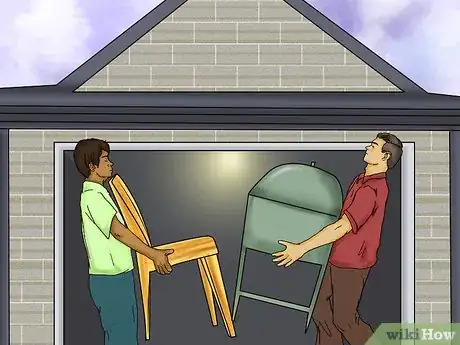



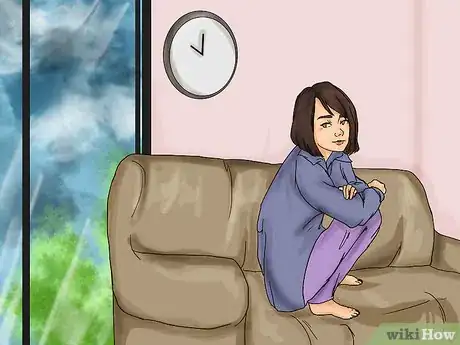

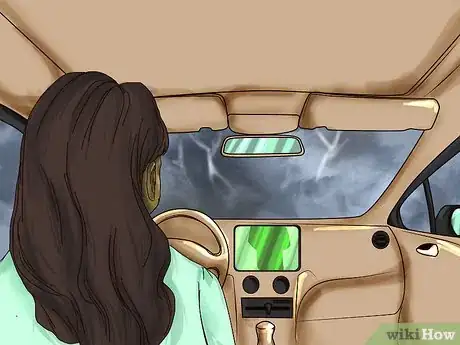

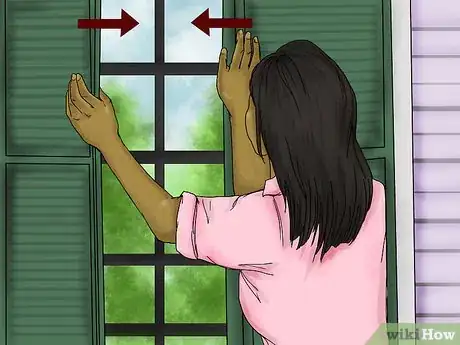


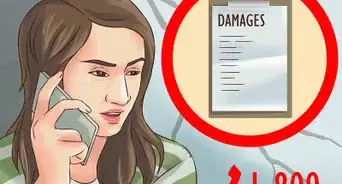

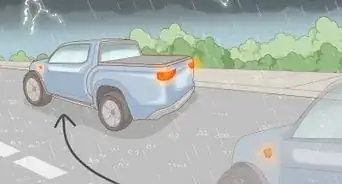

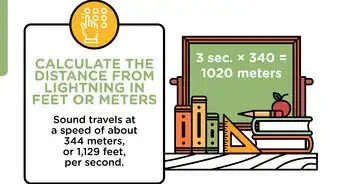
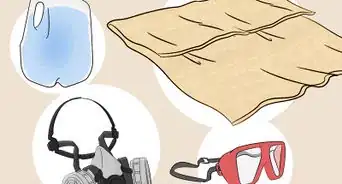


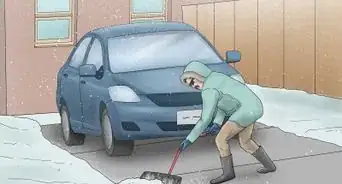
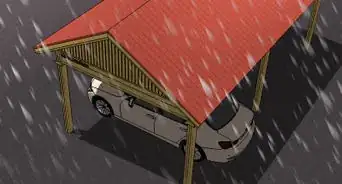
-Step-13.webp)


















































